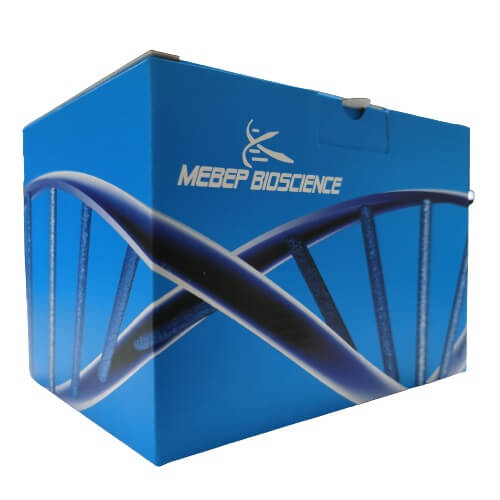
Bacterial genomic Medium Kit
2024-12-02
Apoptotic DNA Ladder Fast Kit
2024-12-05Product Number: DNK1501
Shipping and Storage
1.Buffer AP1 and AP3/E may experience precipitation and precipitation at low temperatures. They can be re dissolved in a water bath at 65℃ for a few minutes (AP3 can be heated before adding ethanol, not after adding ethanol). After restoring clarity and transparency, they can be cooled to room temperature before use.
2.To avoid volatilization, oxidation, and pH changes caused by prolonged exposure of reagents to the air, each solution should be covered tightly in a timely manner after use.
Components
| Component | Storage | 50 preps | 100 Preps | 200 Preps |
| RNase A(10mg/ml) | -20℃ | 250μl | 500μl | 1ml |
| Buffer AP1 | RT | 20ml | 40ml | 80ml |
| Buffer AP2 | RT | 7ml | 13ml | 26ml |
| Buffer AP3/E | RT | 15ml | 25ml | 50ml |
| Buffer WB | RT | 13ml | 25ml | 50ml |
| Buffer EB | RT | 15ml | 15ml | 20ml |
| Adsorption column AC | RT | 50 | 100 | 200 |
| Collection tube (2ml) | RT | 50 | 100 | 200 |
Description
This reagent kit adopts a DNA adsorption column and a novel unique solution system, suitable for rapid and simple extraction of genomic DNA from plant samples containing phenols, polysaccharides, and enzyme inhibitors. The purification of DNA from one or more 100mg fresh or 20mg dry plant samples can be completed within 30 minutes. The extraction process does not require the extraction of toxic organic compounds such as phenols and chloroform, nor does it require time-consuming isopropanol or ethanol precipitation. It can quickly and efficiently remove impurities such as polysaccharides, phenols, and enzyme inhibitors. The purified DNA can be directly used for PCR, enzyme digestion, and hybridization experiments.
Fresh or dry plant tissues (cells) are ground and then lysed by lysate; Proteins, polysaccharides, and cell debris are precipitated and removed; Then, the genomic DNA is selectively adsorbed onto the silica matrix membrane in a highly dissociated salt state. Through a series of rapid rinsing centrifugation steps, impurities such as polysaccharides, polyphenols, cellular metabolites, proteins, etc. are further removed. Finally, the pure genomic DNA is eluted from the silica matrix membrane using low salt Buffer EB.
Features
1.The silicon matrix membranes inside the centrifugal adsorption column are all made of specially designed adsorption membranes, with minimal differences in adsorption capacity between columns and good repeatability. Overcoming the drawback of unstable membrane quality in domestic reagent kits.
2.No toxic reagents such as phenol are required, and no steps such as ethanol precipitation are required.
3.Fast and simple, the operation of a single sample can generally be completed within 1 hour.
4.Several types of polysaccharides, polyphenols, and multiple column washes ensure high purity, with a typical OD260/OD280 ratio of 1.7-1.9, which can be directly used for PCR, Southern blot, and various enzyme digestion reactions.
Application
Suitable for rapid extraction of plant tissue cells and fungal genomic DNA.



